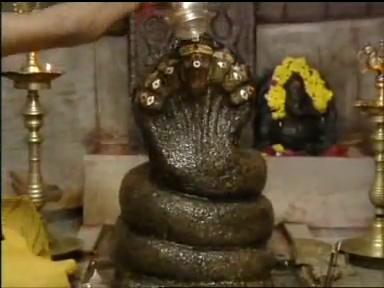Halasana (plough pose)
In this position the body looks like a traditional Indian plough pulled by bulls in the fields. Also by practicing this pose one ploughs the body like one digs the earth, making it loose and free.Taking the asana position
 |
| Exhale and while inhaling slowly raise the legs to a 90 degree angle from the floor. |
 |
| Exhaling raise the waist and hips, taking the legs over the head, keeping them suspended above the |
| ground. |
 |
| After exhaling fully, lower the leg further down and rest the toes on the floor. Keep the toes stretched and |
| breathe normally. |
The asana position
In this position the toes rest on the floor, if there is enough flexibility, otherwise the toes are towards the floor, as far as is comfortable. If the toes reach the floor then try to place the toenails on the floor. Remember there should be no strain. The legs remain straight. If the knees are bent there is less pressure on the abdomen and less stretch into the legs, particularly the hamstrings. The arms should remain in the same position, flat on the floor supporting the neck. The chin is pressed into the chest in the jalandhar bandha or chin lock.Releasing the asana position
1. | Exhale and inhaling lift the toes up from the floor, keeping the legs straight in the knees. |
2. | Continue inhaling and slowly lower the spine back down to the ground, keeping the legs at a 90 degree angle with the floor. |
3. | Exhaling slowly lower both legs back to the supine position. |
Anatomical focus
The neck region, thyroid glands in the throat region, shoulders, lowerback, hamstrings.Awareness
On the neck, Vishuddhi chakra, and Maniour chakra in the abdominal region. Normal breathing focused on abdominal efforts.Do's
1. | Keep the legs straight in knees with toes vertical on the ground over your head. |
2. | Legs are in one straight line. |
3. | As far as possible, the back remains straight and vertical. |
4. | Arms straight with palms on the ground. |
5. | Shoulders resting on the ground with shoulder baldes taking most of the weight and less on the neck. |
6. | The chin resting against the chest. |
Don'ts
1. | Bend the knees. |
2. | Move the neck or overstrain it in the chin lock position. |
3. | Move into this asana fast as a lot of stress is put onto the spine. |
Benefits
1. | Improves the tone and strength of the back muscles as the back is folded, as well as the leg muscles and abdominal muscles. It also removes the rigidity of the back muscles. |
2. | Improves the working of the spinal nerves, putting pressure on the nerves in the neck region which are predominantly sympathetic. |
3. | Improves the function of the thyroid, parathyroid and pituitary glands. All of the other endocrine glands are regulated by these main glands and so the overall function of the endocrine system is improved. This results in the improved functioning of all the systems of the body. |
4. | Gives a complete stretch to the spine which increases its elasticity and overall functioning. |
5. | Stretches the shoulders. |
6. | Activates digestion and helps with constipation, improves the efficiency of all the abdominal organs such as the spleen, pancreas, liver and kidneys. The breathing movements of the diaphragm help to massage the abdominal organs. |
7. | Activates the thyroid gland and thymus gland, stimulating metabolism and immunity. |
8. | Calms the mind and reduces stress. |
9. | Can induce states of pratyahara (sense withdrawal). |
Benefits for Women
1. | Due to the compression of the pelvic area it improves the circulation and tone to the reproductive organs, increasing their efficiency. |
2. | Can help to strengthen the lower back and sacral area, preventing lower back pain during menstruation. |
Therapeutic applications
| Asthma |
| Cough and cold |
| Constipation |
| Menstrual disorders |
Precautions and Contra-indications
1. | Should be avoided during pregnancy and menstruation, high blood pressure and brain diseases. |
2. | Should be avoided if suffering from an enlarged thyroid, spleen or liver as well as cervical spondylitis, slipped disc, neck problems, headache and weak blood vessels in the eyes. |
Duration
To begin with this pose can be a little difficult so start with a few repetitions of ten seconds at a time. When the body is used to this then the asana can be held for 30 seconds. After some time it can be maintained for up to 3 minutes.Additional section -
Variations and tips
Some like to hold the toes of the feet with the hands or place the hands below the neck. However if held for too long this can put too much pressure on to the upper spine. It is important that the back is straight, not at 45 degrees, with the chin tucked in towards the chest as this helps the toes to touch the floor. If liked the arms can be bent with hands placed on the back like in sarvangasana. This can be helpful for balance when the toes do not touch the ground.Preparatory poses
| Sarvangasana |
| Viparit Karni |
| Ashwini Mudra |
Follow up poses
| Vistrut Pada Halasana |
| Karnapeedanasana |
| Matsyasana ? to counterbalance the Jalandhar Bandha |
| Chakrasana |
| Pawanmuktasan and/or Ardha Chakrasan with both feet on the floor ? to relieve any tension that has accumulated in the lower back |

కామెంట్లు లేవు:
కామెంట్ను పోస్ట్ చేయండి